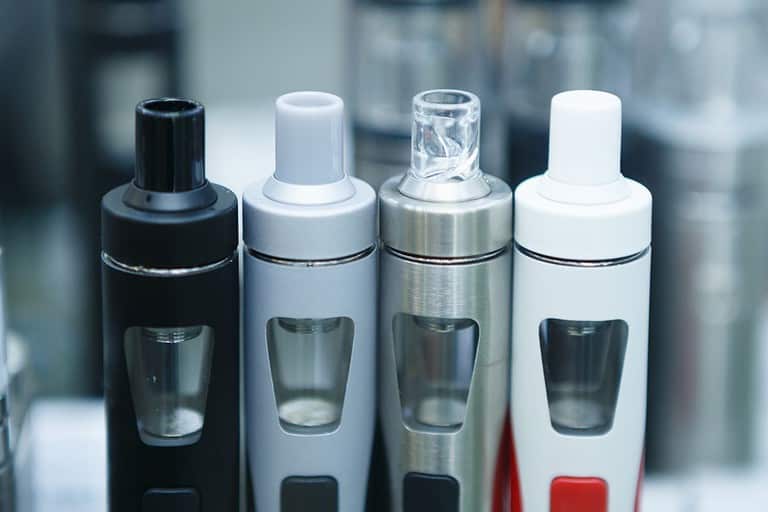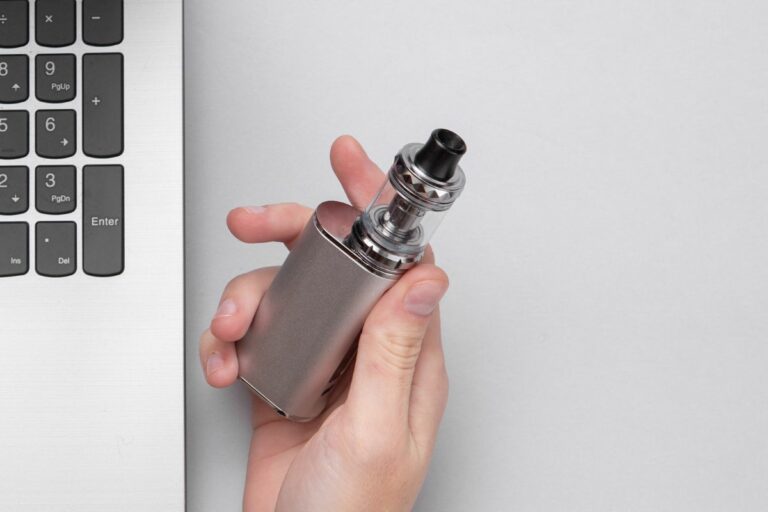If You Hit a Cart: How Long It Stays in Your System Explained
When discussing the impact of hitting a cart on one’s system, it’s important to clarify the context in which this event occurs. Carts can refer to shopping carts, golf carts, or even digital carts on websites. Thus, the effects of hitting a cart and its duration in one’s system can vary greatly depending on the type of cart and the circumstances involved.
In the context of a physical shopping cart, accidentally colliding with one could lead to minor injuries, embarrassment, or temporary inconvenience. In such cases, the incident may stay in a person’s mind for a brief period, but is not likely to have any lasting effects. On the other hand, if a collision with a golf cart leads to an accident causing physical harm or property damage, the experience may have a more lasting impact on the individuals involved.
With digital carts, such as those used in online shopping, the issue might refer to leaving items in the cart and how long they remain there without completing the purchase. Generally, it depends on the website’s settings and policies, as some websites may keep items in the cart for a specific time frame or until the user manually removes them. In either case, it is essential to understand the context and seek an appropriate response or solution to mitigate any negative consequences.
Table of Contents
Understanding Carts: Definition and Contents
Carts, or vape cartridges, are pre-filled devices containing THC, the main psychoactive component found in marijuana. They are designed to be vaporized using a vape pen or an electronic device. In this section, we will explore the contents of these carts and the effects they can have on the user.
The primary ingredient in carts is a concentrated THC oil, which is intended to provide the user with the effects of marijuana without the need to smoke it. Typically, carts contain between 70-90% THC, making them much more potent than traditional marijuana products. Other ingredients may include flavorings and cutting agents, such as propylene glycol or vegetable glycerin.
When using a cart, the THC oil is heated to a temperature that allows it to be inhaled as vapor. Upon inhalation, the THC quickly enters the bloodstream through the lungs. The user may experience the psychoactive effects of THC within minutes, with the peak effects typically occurring around 30 minutes after inhalation.
NEW CUSTOMER DISCOUNT
Save 15%
15% OFF YOUR ENTIRE ORDER FOR NEW CUSTOMERS USE CODE WELCOME15!
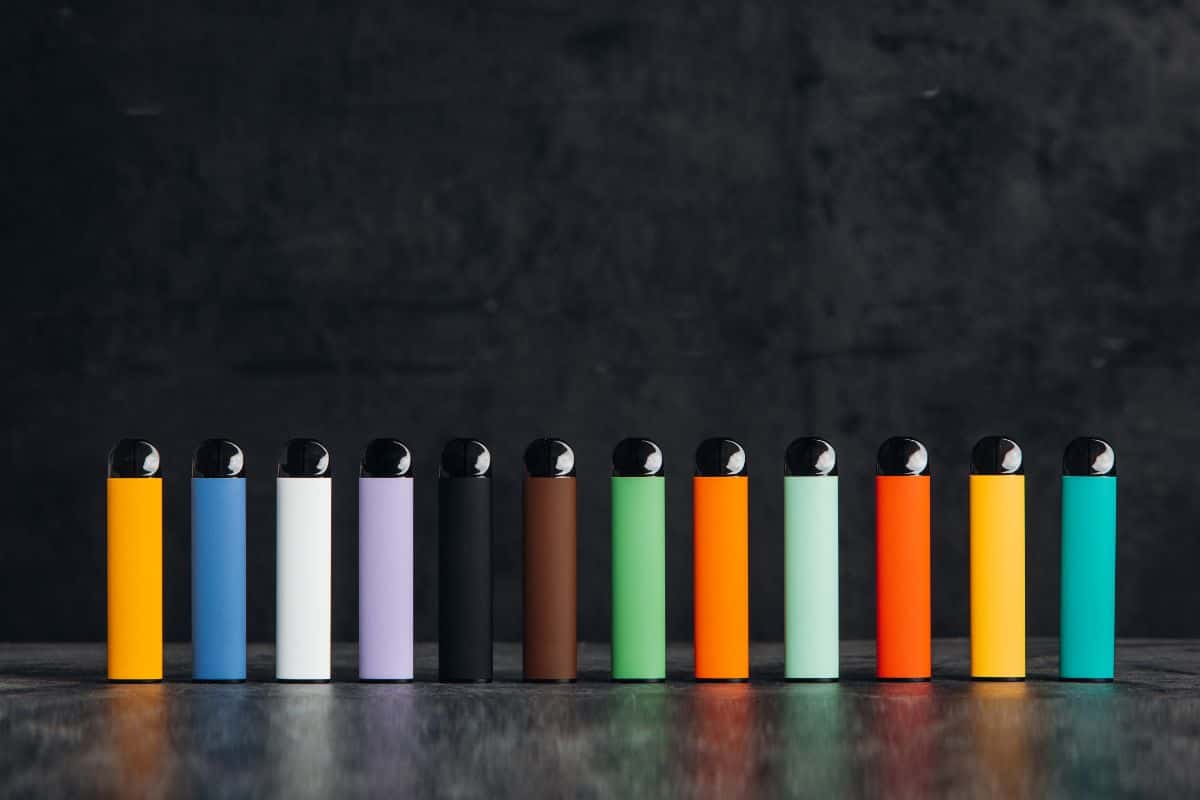
How long THC stays in a user’s system varies based on several factors, such as frequency of use, metabolism, body fat percentage, and the potency of the product consumed. Generally, the THC from a cart can be detected in the user’s urine for several days to a few weeks after the last use. It is important to note that, with repeated use, THC can accumulate in the body, leading to the substance remaining detectable for a more extended period.
In conclusion, carts are a discreet and potent way to consume THC. When using these products, users should be aware of the high THC concentrations and the potential for the substance to remain detectable in their system for an extended period. Individual factors will impact how long THC stays in a user’s system, so it’s essential to consider one’s unique circumstances when assessing the duration of detectability.

Hitting a Cart: What it Means
When someone mentions hitting a cart, they are typically referring to using a vape pen or electronic cigarette that contains a cartridge (cart), which is filled with a concentrated form of cannabis or other substances. This section will discuss the basic idea behind hitting a cart and some factors that influence its duration in the system.
Hitting a cart involves inhaling vaporized substances, such as THC or nicotine, into your lungs. The method is considered more discreet and convenient compared to traditional smoking methods. Additionally, it is thought to be less harmful due to the absence of combustion and smoke inhalation.
The duration of substances from hitting a cart in a person’s system depends on various factors such as the substance used, the individual’s metabolism, frequency of use, and the concentration of the substance in the cartridge. It is important to note that each individual’s body is unique and will process these substances differently.
For example, the active compounds in cannabis, like THC, can be detected in a person’s system within a few hours to several days. Regular users might have THC lingering in their bodies for weeks, while occasional users may clear it out within a few days.
The art of hitting a cart involves proper technique and understanding of the device’s functionality. Users should be aware of the battery life, the cartridge’s compatibility with the vape pen, and the adjustable temperature settings, as these factors can significantly impact the quality of the vaping experience.
In conclusion, hitting a cart offers a discreet, convenient, and potentially less harmful alternative to traditional smoking. However, the duration and effects of the substances involved will vary depending on the individual and the specific substance being vaped.

How Long Does It Stay in Your System
When it comes to hitting a cart, also known as using a vape cartridge, understanding how long it stays in one’s system is essential. Generally, the duration depends on the substance consumed, as well as individual factors such as metabolism, body weight, and frequency of use.
- THC: The primary psychoactive component in cannabis, THC, can be detected in the body for varying periods. Occasional users might find it leaves their system within a few days, whereas heavy users may continue to show traces for up to a month. Urine tests typically detect THC for 3 to 30 days, while blood tests tend to reveal it for 1 to 7 days.
- CBD: Even though CBD does not produce any psychoactive effect, it’s crucial to know how long it stays in the system. Generally, CBD can be detected in blood tests for up to 3 days, depending on the dose and frequency of use. It’s also possible for it to be detected for a week or more in heavy users. In urine tests, CBD is less commonly tested and can yield varying results based on individual factors.
- Nicotine: Nicotine, the primary addictive substance in tobacco, is also present in some vape cartridges. This chemical can stay in the system for a shorter duration compared to THC and CBD. Blood tests can detect it within 1-3 days, while urine tests may show traces of nicotine for up to 3-4 days.
It is essential to consider the factors that affect the duration any substance stays in the system. For instance, an individual’s metabolic rate plays a crucial role in determining how quickly the body can break down and eliminate substances. Additionally, body weight, fat percentage, and hydration levels can also have a significant impact on this process.
Furthermore, users who consume vape cartridges more frequently or in higher doses are likely to retain the substances in their system for a more extended period. It’s essential to remember that these general guidelines may differ depending on the mentioned factors, and the results may vary from person to person.
Metabolism of THC in the Body
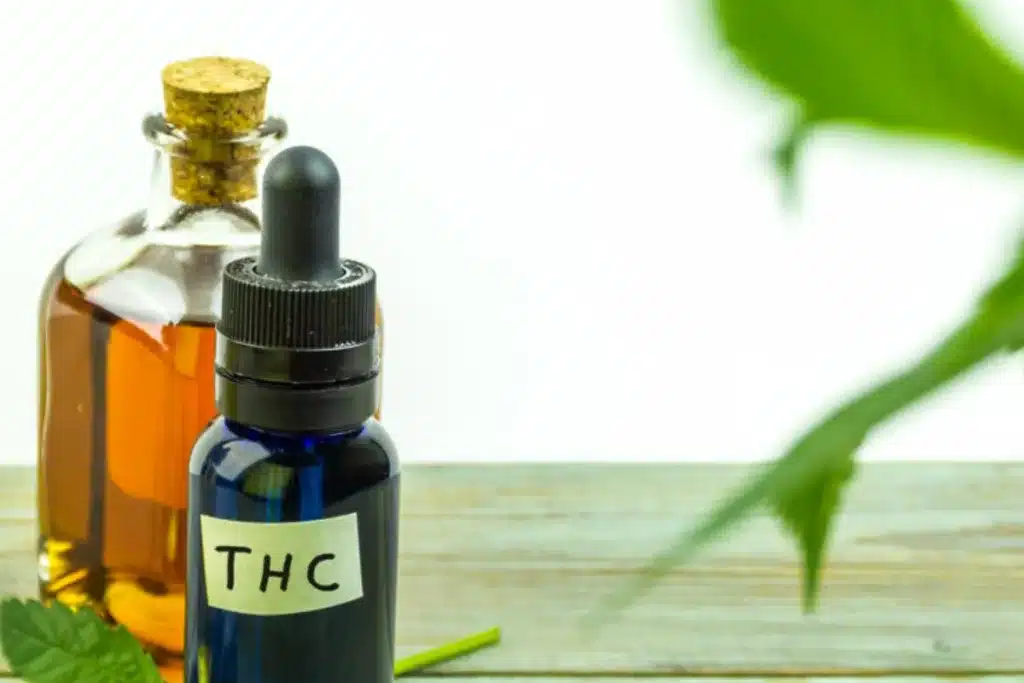
Effects on the Liver
The liver plays a crucial role in the metabolism of THC, the primary psychoactive compound found in cannabis. When THC enters the bloodstream, it is rapidly absorbed by the liver, where it is converted into more than 30 different metabolites. One of the most significant metabolites formed is 11-hydroxy-THC, which is then further converted into 11-nor-9-carboxy-THC, a non-psychoactive compound. These metabolites eventually exit the body through feces and urine.
It’s important to note that the liver’s processing of THC can be influenced by factors such as age, metabolism rate, and the presence of other drugs. Additionally, frequent cannabis use may result in the accumulation of THC metabolites in the liver, leading to longer detection times in drug tests.
Impact on the Lungs
When cannabis is smoked or vaporized, THC enters the lungs and quickly diffuses into the bloodstream. Although the lungs play a lesser role in THC metabolism compared to the liver, they still contribute to the overall elimination of the compound from the body. Inhaled cannabis can cause immediate respiratory effects, such as bronchodilation or bronchoconstriction, depending on the individual and the specific cannabinoid content.
Once THC and its metabolites are absorbed into the bloodstream from the lungs, they eventually make their way to the liver for further processing. Therefore, the lungs’ role in the metabolism of THC primarily involves the initial absorption and distribution of the compound before it reaches the liver for more extensive breakdown and elimination.
In conclusion, the metabolism of THC in the body primarily involves the liver and lungs. The liver plays a more significant role in breaking down THC into its many metabolites and excreting them from the body, while the lungs are responsible for the initial absorption of THC during inhalation. Understanding these processes and their effects on the body is essential for assessing the potential impacts and detection times of cannabis use.
Factors Influencing Stay

Frequency of Use
The frequency of use plays a significant role in determining how long a substance remains detectable in an individual’s system. If a person hits a cart occasionally, the substance will most likely be eliminated from their system more quickly compared to a frequent user. This is due to the buildup of the substance in the body which tends to stay longer with frequent exposure. Consequently, it is important to consider the individual’s usage habits when trying to estimate how long a substance stays in their system.
Water Intake
Water intake can also influence how long a substance lingers in a person’s system. Adequate hydration promotes the overall function of the body’s organs and assists in the elimination process. Drinking an appropriate amount of water can help flush out the substance, accelerating its elimination from the body. In contrast, insufficient water intake may slow down the detoxification process, consequently prolonging the time that the substance remains detectable. Therefore, an individual’s water consumption habits should be taken into account when assessing how long a substance will stay in their system.
Drug Testing for THC
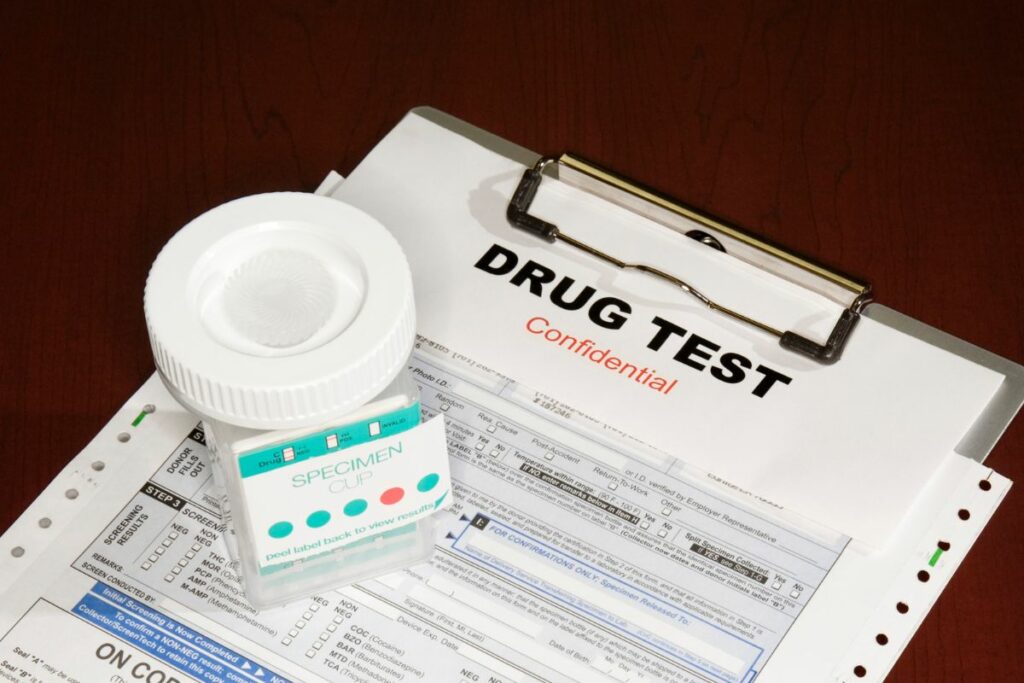
Urine Tests
Urine tests are the most common method used for detecting THC in an individual’s system. When a person consumes cannabis, the active ingredient, THC, is metabolized into THC-COOH, which can be detected in urine samples. The window of detection for THC-COOH varies depending on factors such as frequency of use, body fat percentage, and metabolism. For occasional users, THC-COOH may be detectable for up to a week, while frequent or heavy users may test positive for several weeks after their last use.
It’s important to note that urine tests measure the presence of THC-COOH, not the amount of THC itself. This means that a positive urine test doesn’t necessarily indicate recent use or impairment, but rather that an individual has used THC at some point within the detection window.
Science Behind Drug Tests
Drug tests are designed to identify and quantify specific substances within biological samples. In the case of THC, tests typically target the metabolite THC-COOH. Enzyme immunoassay (EIA) and gas chromatography-mass spectrometry (GC-MS) are two common testing methods used for detecting THC-COOH in urine samples.
- Enzyme immunoassay (EIA): EIA is a rapid and cost-effective method often used as an initial screening test. This test utilizes antibodies that bind to THC-COOH, forming a complex that can be measured. However, EIA tests can be prone to false-positive results due to cross-reactivity with other substances.
- Gas chromatography-mass spectrometry (GC-MS): GC-MS is a more sophisticated and accurate method, typically employed as a confirmatory test after a positive EIA result. In this method, urine samples are vaporized and separated by gas chromatography, then analyzed by mass spectrometry to identify and quantify THC-COOH.
Though urine tests are the most widely used method for detecting THC, alternative testing methods, such as blood, saliva, and hair tests, are also available. These tests generally have shorter detection windows and are less commonly used due to their higher costs and invasiveness. It’s crucial to remain informed about the methodologies and limitations of drug testing to ensure accurate interpretation of results.

Legalities and Regulations
When discussing the legalities and regulations surrounding hitting a cart, it is important to first clarify the type of cart in question. Various carts, such as shopping carts, golf carts, or horse-drawn carts, may have different regulations and laws applicable to them in different jurisdictions.
In the case of an accident involving a shopping cart, the property owner or store owner may be held responsible if they did not provide adequate measures to ensure the safety and security of their carts. Depending on the jurisdiction, the injured party may be able to seek compensation for damages or injuries sustained in the accident. It is crucial to be aware of the specific laws and regulations in one’s local area to understand the potential legal consequences.
When it comes to golf carts, the legalities and regulations can vary depending on the location of the golf course and the specific rules set by the establishment. For instance, some golf courses may require a valid driver’s license to operate a golf cart, while others may not. Furthermore, accidents involving golf carts can lead to significant legal liabilities, particularly if the cart operator was found to be negligent or under the influence of alcohol or drugs. In such cases, the injured party may pursue legal action to obtain compensation for their injuries or damages.
For horse-drawn carts, the legalities and regulations can be quite different from carts powered by an engine. In many jurisdictions, the rules of the road apply to horse-drawn carts, and operators are required to comply with traffic laws, such as obeying stop signs and using proper signals. Accidents involving horse-drawn carts may lead to civil lawsuits, especially if the cart operator is found to be at fault due to negligence or recklessness.
In summary, the specific legalities and regulations surrounding hitting a cart depend on various factors, such as the type of cart and the jurisdiction in which the incident occurred. It is essential to familiarize oneself with the laws and regulations applicable to their specific situation to avoid potential legal consequences and ensure compliance with the relevant rules.
Hitting a Cart: Impact on Cognitive Functions
Hitting a cart introduces cannabinoids, such as THC and CBD, into the system. These compounds interact with the body’s endocannabinoid system, affecting various cognitive functions. In this section, we discuss the impact of hitting a cart on cognitive functions, highlighting the role of cannabinoids and considering both mind-altering and non-psychoactive aspects.
Cannabinoids, particularly THC, are known for their mind-altering properties. When hitting a cart containing THC, an individual may experience altered perceptions, memory impairments, and difficulty concentrating. These effects usually last as long as the cannabinoids remain present in the system, typically ranging from a few hours to a couple of days, depending on the individual’s metabolism and frequency of use.
On the other hand, CBD is a non-psychoactive cannabinoid that does not produce mind-altering effects. Instead, CBD is known for its potential therapeutic benefits, such as reducing anxiety and promoting relaxation. When hitting a cart containing CBD, an individual may experience improved cognitive functions, such as reduced stress and enhanced focus. However, these effects may vary depending on the person and the concentration of CBD in the cart.
It is crucial to note that carts can contain varying ratios of THC and CBD, with some products leaning more towards either psychoactive or therapeutic effects. The cognitive impact of hitting a cart ultimately depends on the specific cannabinoid composition and an individual’s tolerance and sensitivity to these compounds.
In summary, hitting a cart can affect cognitive functions in different ways, based on the cannabinoids present. While THC is responsible for mind-altering effects, CBD contributes to the potential therapeutic benefits without producing psychoactive outcomes. The duration and intensity of the effects depend on various factors, such as the individual’s metabolism and the cart’s cannabinoid content
Cannabis versus Carts: A Comparative Analysis
Cannabis, in its natural plant form, has been consumed for centuries across various cultures and continents. On the other hand, carts or cannabis vape cartridges are a relatively newer addition to the marijuana consumption landscape, offering an alternative method of ingestion while riding on the growing trend of vaping. In this analysis, we will explore and compare the duration of time these substances stay in the consumer’s system.
Inhaling cannabis smoke typically results in immediate psychoactive effects, peaking within 30 minutes to an hour, and gradually wearing off over the next few hours. However, the cannabinoids – mainly THC – can be detected in the body for varying periods, depending on factors such as frequency of use, body fat, and metabolism. For an occasional user, THC metabolites may be traceable for up to 7 days, while for heavy users, it could extend to several weeks or even months.
Vape cartridges, on the other hand, contain a concentrated form of cannabis oil, which is heated and inhaled via a vaporizer. The high potency of vape cartridges can lead to more intense effects that may last longer than traditional cannabis smoke. Nevertheless, THC stored in the user’s system from vaping follows a similar pattern as cannabis, with the detection window varying based on individual factors and usage habits.
One notable distinction between the two forms of consumption is the place, or setting, in which they are used. Traditional cannabis smoking often requires a larger space, access to smoking paraphernalia, and generates an unmistakable odor. In contrast, vape cartridges are discreet and portable, allowing users to partake virtually anywhere without attracting much attention. This convenience has contributed to their growing popularity, especially in urban areas.
In summary, there are similarities and differences in how long cannabis and carts stay in a user’s system. Both substances have unique detection windows and can be influenced by individual factors like metabolism and frequency of use. Furthermore, the increasing popularity of carts can be attributed to their discreet nature and ease of use, making them a preferred choice for cannabis enthusiasts in public places or settings that would otherwise make traditional smoking challenging.

Vaping and Smoking: Differences
Vaping and smoking are two distinct ways of consuming nicotine. While both involve inhaling a substance, they differ in the materials used, the devices, and the health effects on users.
Vaping involves the use of electronic cigarettes (e-cigarettes) or vaporizers, which heat a liquid solution to create an aerosol. This liquid, commonly called vape juice or e-liquid, typically contains nicotine, propylene glycol, glycerin, and flavorings. When users inhale the vapor, they get a dose of nicotine without many of the harmful chemicals produced by burning tobacco in traditional cigarettes.
On the other hand, smoking involves the combustion of tobacco leaves, which produces smoke containing nicotine and thousands of other chemicals, including numerous toxins and carcinogens. The toxic byproducts of combustion are inhaled into the lungs, which can cause a range of health problems and contribute to the development of diseases such as lung cancer, heart disease, and chronic obstructive pulmonary disorder (COPD).
One key difference between vaping and smoking is the amount of harmful chemicals and substances inhaled. Vaping is considered to be less harmful than smoking because it produces fewer toxic byproducts, as there is no combustion. However, it is important to note that vaping is not completely risk-free. Some studies have found potentially harmful components in e-cigarette aerosols, such as formaldehyde and acetaldehyde.
Another difference between the two lies in the devices used. E-cigarettes come in various shapes and sizes, often mimicking the appearance of a traditional cigarette, while vaporizers can be larger and have a tank for holding the e-liquid. These devices use a battery-powered heating element to heat the liquid without combustion, which reduces the harmful chemicals produced.
Additionally, vaping offers more customization options for users. They can choose from a wide range of e-liquid flavors and nicotine concentrations, giving them control over their vaping experience. Smokers, in contrast, have limited options in terms of tobacco brands and cigarette types.
In conclusion, while vaping and smoking both deliver nicotine and involve inhaling a substance, they differ in the materials used, the devices, and their health effects. Vaping can be considered a less harmful alternative to smoking due to the absence of combustion and the reduced production of toxic chemicals. However, it is essential to recognize that vaping still carries risks and is not entirely safe.
Popular Online Discussions about ‘Hitting a Cart’
In recent years, there has been an increase in online discussions surrounding the use of THC vaping devices, often referred to as “hitting a cart.” These electronic devices allow users to consume cannabis products discreetly and conveniently, leading to more people sharing their experiences and seeking advice online. One platform where such discussions are popular is Reddit, a forum where users can engage in conversations on various topics.
Participants in these discussions often inquire about the duration that THC carts stay in their system. This concern is often related to an upcoming drug test or detoxification process. While the exact time frame depends on several factors, such as individual metabolism and frequency of use, it is generally estimated that THC from vaping can be detected in the system for up to 30 days. However, as every person metabolizes substances differently, there is no absolute rule that applies to everyone.
Another topic of discussion revolves around the safety and quality of the carts available on the market. Users frequently share their experiences, offering tips for identifying reputable brands and avoiding low-quality or counterfeit products. Some of the advice includes paying attention to the packaging, ensuring that the cart contains lab-tested cannabis oil, and seeking recommendations from trusted sources.
Additionally, forum participants often share tips on responsible usage, such as monitoring the dosage, taking breaks between sessions, and paying attention to the onset of any adverse side-effects. Engaging in these discussions not only promotes responsible use but also provides a platform for users to exchange knowledge, especially for those new to vaping cannabis products.
In summary, popular online discussions about ‘hitting a cart’ cover various aspects, such as the duration of THC in the system, the safety and quality of products, and responsible usage. Platforms, such as Reddit, serve as valuable resources for individuals to share experiences and seek advice from knowledgeable peers.
The Gaming Perspective
In the world of gaming, hitting a cart usually refers to collision scenarios in racing or sports games. For instance, in games such as Super Tux Kart, a player’s vehicle might collide with a cart or another obstacle, requiring a recovery period before continuing the race.
Similarly, in NFL-themed games like the Madden series, collisions between players can lead to temporary setbacks. Players might hit the ground, take a moment to recover, then rejoin the game. In both scenarios, the recovery time depends on the game mechanics and physics, understanding them helps maintain game flow and player performance.
When it comes to game physics, developers pay close attention to make collisions and recoveries realistic and engaging. In racing games, factors such as the cart’s size, speed, and angle of impact can influence recovery time. Players must strategize to avoid such setbacks or make use of game mechanics like power-ups to minimize their effect.
NFL-themed games also simulate real-world physics to represent collisions accurately. Factors like players’ size, strength, and speed determine the impact of hits, along with the animations and recovery time. Gamers need to be aware of player skills and adjust their strategies accordingly, ensuring effective offensive and defensive plays.
In summary, the duration of game setbacks caused by hitting a cart or experiencing a collision in a sports game depends on the game mechanics, physics, and strategy. Players in racing games must navigate courses intelligently, while NFL-themed games demand adaptation to player attributes and situational awareness. Both cases highlight the importance of mastering game-specific nuances to excel and enjoy the gaming experience.
Key Business Players in Cannabis Market
The cannabis market has witnessed significant growth over the years, with a diverse range of players entering the space at various levels. While the majority of these companies are primarily focused on cannabis production and distribution, some larger corporations with seemingly unrelated business models, such as GameStop and Tesla, have also been indirectly affected by or explored potential opportunities in the industry.
Major cannabis companies, such as Canopy Growth, Aurora Cannabis, and Tilray, have played a crucial role in the development and expansion of the market. These front-runners have established themselves through continuous innovation, research, and compliance with regulations. They have driven progress in the areas of cultivation, processing, and the introduction of novel cannabis-based products.
Notably, the cannabis market has also caught the attention of established companies in other industries. For example, well-known beverage companies have started to invest in or collaborate with cannabis companies to develop and distribute cannabis-infused beverages. These strategic partnerships have further enhanced the visibility of the market and increased its potential for growth.
GameStop, a leading retailer in the gaming industry, has indirectly experienced the impact of the cannabis market. As the market expands and more products become available, consumers have increasingly shown interest in diverse areas such as gaming accessories or even decor items related to cannabis culture. GameStop could potentially leverage this opportunity to expand their product line and engage with a broader customer base.
Tesla, an innovative leader in clean energy and electric vehicles, has also been linked to the cannabis market through their CEO, Elon Musk. While the company has not directly invested in or participated in the cannabis industry, Musk’s personal connection and occasional discussions around cannabis may create further interest in the market. In addition, Tesla’s focus on sustainability and renewable energy could potentially align with the growing importance of environmental considerations within the cannabis sector.
In summary, the cannabis market has attracted numerous players from diverse industries, strengthening its position and creating a ripple effect across other markets. Both traditional cannabis companies and unconventional players like GameStop and Tesla have the potential to contribute to the development and expansion of this rapidly evolving space.

Relevance with Crypto
Cryptocurrency, like Bitcoin, has become increasingly popular in recent years. Bearing that in mind, understanding its relevance in various systems is essential for accurate analysis and practical applications.
When discussing the concept of “hitting a cart” and how long it stays in one’s system, it is interesting to consider the potential connections to the world of cryptocurrency. However, it should be noted that “hitting a cart” is generally related to drug use, specifically cannabis consumption. Thus, a direct correlation between this concept and cryptocurrency can be quite a stretch.
That being said, there are still instances where cryptocurrency plays an indirect role in these scenarios. For example, the anonymity provided by cryptocurrencies such as Bitcoin has enabled people to buy and sell various items, including potentially illicit substances, on online marketplaces. In these cases, the ability to track transactions or connect them to individuals is significantly more challenging, adding to the interest in understanding the intersection of these two seemingly unrelated subjects.
Keep in mind that although cryptocurrency and its impact on purchasing systems are noteworthy, it still does not provide information on the time it takes for specific substances to leave one’s system. The question of “hitting a cart” and its duration in someone’s system is, in most cases, unrelated to the use of cryptocurrencies. Instead, understanding this aspect requires a different line of inquiry, focusing on factors such as individual metabolism, frequency of use, and the specific compounds involved within the substance.
Popular Culture and Media Representation
In recent years, the topic of hitting a cart and its lasting effects within the system have garnered attention in various forms of media, including television and anime. These popular culture representations often explore the consequences of such actions on both the individuals involved and the broader society, with a tone that is often neutral and informative.
Television shows, for example, have incorporated storylines that deal with the aftermath of hitting a cart. In these instances, characters grapple with the physical, legal, and ethical repercussions of their actions. The subject matter is approached with sensitivity, providing a realistic glimpse into the complexities that can arise. At the same time, television programs have taken some creative liberties with facts and figures to enhance the entertainment value.
Similarly, anime has also tackled the issue of cart-related incidents, adding its unique artistic flair to the storytelling. In these settings, the characters’ experiences with carts often serve as a metaphor for personal challenges or broader societal issues. By weaving the topic into engaging narratives, anime offers a medium to discuss potential consequences and coping strategies in a complex and relatable manner.
Through their portrayals of cart-related incidents, television and anime contribute to the ongoing conversation surrounding this topic. By addressing the issue with a blend of realism and creative expression, these popular culture formats invite audiences to further explore the subject and consider the implications of hitting a cart in various scenarios.
Celebrity Views and Opinions
Many celebrities have shared their opinions on various health and wellness topics. When it comes to the subject of hitting a cart and the duration it stays in one’s system, a few celebrities have offered their views. It is important to remember that while celebrities may have personal experiences, their opinions might not be based on scientific evidence, and it is always best to consult professional advice when making decisions about one’s health.
Kim Kardashian, for example, has been known to follow trends and share her experiences with her fans. Although there is no direct quote from Kim about carts, she has been open about her lifestyle choices and the importance of maintaining a healthy lifestyle. Kim has frequently advocated for considering the long-term effects of our choices, including the use of substances that may alter our physical or mental well-being.
Other celebrities, while not specifically mentioning carts, have shared their perspectives on health, wellness, and substance use. For instance, many have encouraged their fans to prioritize their well-being and be mindful of the substances they choose to consume. It is essential to consider how such substances may have lasting effects on one’s body and mental health, as well as how long they may stay in the system.
In conclusion, celebrities have shared their opinions on a range of health-related topics, including the potential effects of carts. While some offer valuable insights, it is important to approach these views with a critical and informed mindset. Always consult with a professional to better understand the potential impacts of any substance on one’s health.
Browse popular vape collections:
- Nicotine Disposables
- 2000 Puff Nicotine Disposable Vapes
- 2500 Puff Nicotine Disposable Vapes
- 5000 Puff Nicotine Disposable Vapes
- 6000 Puff Disposable Nicotine Vapes
- 7000 Puff Nicotine Disposable Vapes
- Disposable Vape Deals
- Best Vape Brands
- 8000 Puff Nicotine Disposable Vapes
- 9000 Puff Nicotine Disposable Vapes
- 5% Nicotine Disposable Vapes
- Rechargeable Nicotine Disposable Vapes
- Vape Coils
- Dab Wax Pens
- Dab Wax Pen Battery
- Yocan Vapes
- Vape Cases
Frequently Asked Questions
How long does CBD vape remain in your body?
CBD vape is generally cleared from the body within a few days, depending on the individual’s metabolism and usage patterns. However, in some cases, traces of CBD can still be detected in the body up to a week after consumption. It is important to note that CBD is non-psychoactive and will not cause a positive result on standard drug tests.
Do dab pens last longer in the system than flower?
The duration of dab pens and flower in the system can vary depending on factors such as dosage, frequency of use, and individual metabolism. Dab pens, which are concentrated forms of cannabis, might have a longer-lasting effect on the body due to their higher potency. That said, both forms can still be detected in drug tests for similar durations, typically ranging from a few days to a few weeks.
One hit of dab pen and its effect on drug tests
A single hit from a dab pen may or may not be enough to cause a positive result on a drug test. Factors such as the concentration of THC in the dab pen, the individual’s metabolism, and the sensitivity of the test can all influence the outcome. It is recommended to exercise caution and be aware of potential consequences if subjected to drug tests.
How long does Delta 8 THC stay detectable?
Delta 8 THC, like other cannabinoids, can stay detectable in the body for varying durations depending on factors like dosage, frequency of use, and individual metabolism. Generally, Delta 8 THC can be detected for up to a few weeks after consumption in urine tests and may be detectable in hair tests even longer.
Duration of Delta 9 THC in the system
Delta 9 THC, the primary psychoactive compound in cannabis, can remain detectable in the body for significant periods. Urine tests can typically detect Delta 9 THC for several days to a few weeks, while hair tests can detect it for up to 90 days after consumption. Factors such as frequency of use, dosage, and individual metabolism can influence how long it remains in the system.
Time taken for a dab pen to show effects
The effects of a dab pen can be felt within minutes of consumption, as the vaporized cannabinoids are quickly absorbed by the lungs and enter the bloodstream. The onset of effects can be even faster than smoking cannabis flower, and the overall experience may be more potent due to the concentrated nature of the product.






